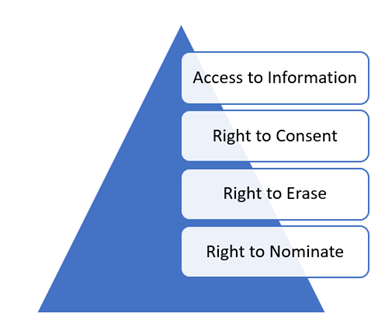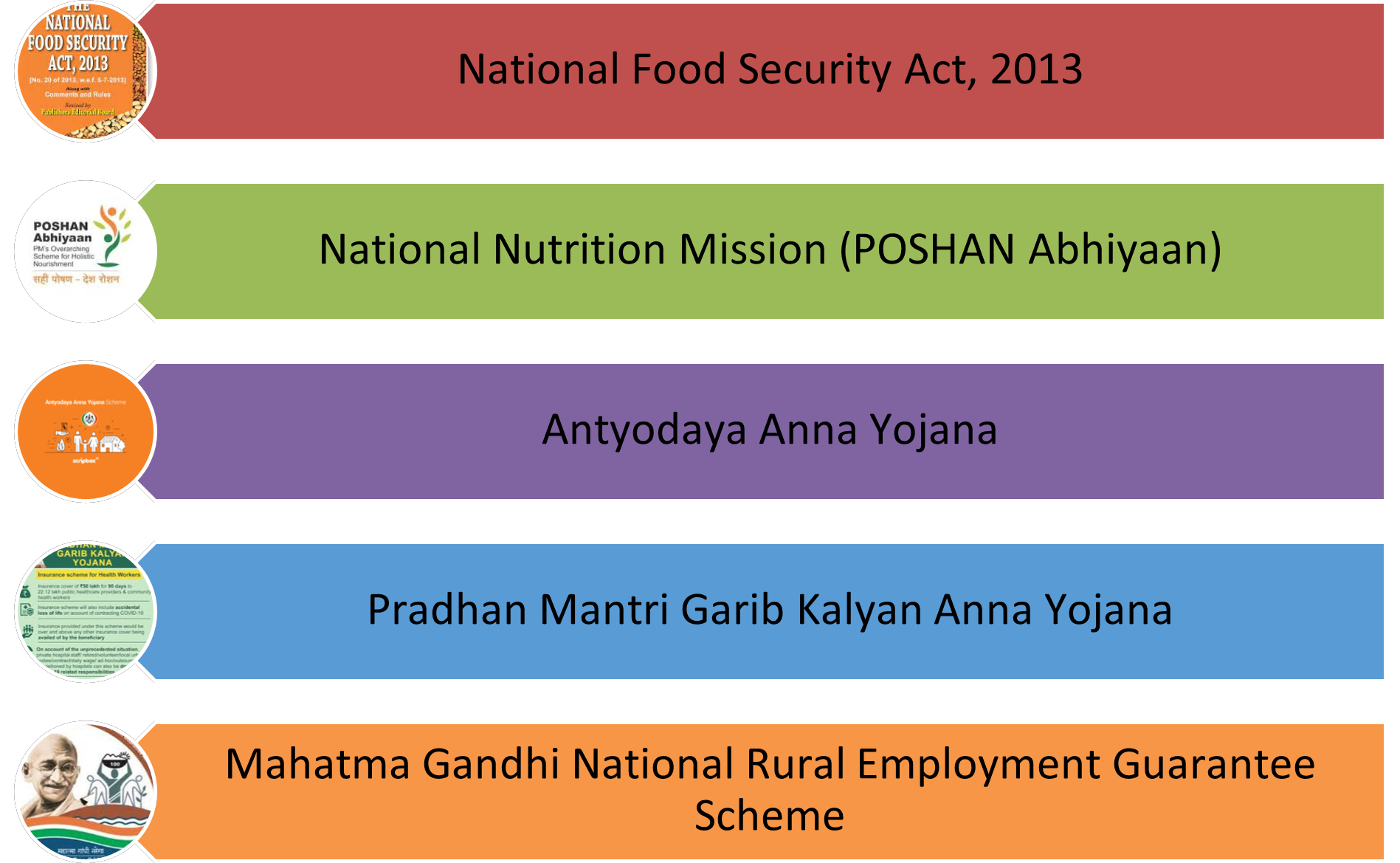Tuesday, 31st January 2023
Carbon Trading in the Agriculture Sector
Exam View: Carbon Trading, Carbon Trading Opportunities in the Agricultural Sector, Challenges Associated with carbon trading in Agriculture.
In News: Farming communities have opportunities to sequester and sell carbon credits.
India updated its Nationally Determined Contribution (NDCs) to the United Nations Framework Convention on Climate Change (UNFCC) in August 2022.
The updated NDC includes 50 per cent cumulative electric power installed from non-fossil fuel-based energy sources and an additional carbon sink of 2.5-3 billion tonnes of CO2 equivalent through forest and tree cover by 2030.
The updated NDC target also aims to reduce the emissions intensity of its Gross Domestic Product (GDP) by 45% from 2005 levels by the year 2030. It also talks about propagating a healthy and sustainable way of living, including (through) a mass movement for LiFE – ‘Lifestyle for Environment’ as a key to combating climate change.
The Energy Conservation (Amendment) Bill, 2022 was passed by Parliament which mandates the exploration and use of non-fossil fuel energy sources and the creation of a national carbon market. The Bill is also futuristic in achieving the target of net zero emission by 2070.
The agriculture sector plays a significant role in carbon trading because it has the potential to both emit and sequester carbon. Agricultural activities such as tilling, fertilizer use, and livestock production can release greenhouse gas into the atmosphere. On the other hand, practices such as agroforestry, conservation tillage, and soil carbon sequestration can remove carbon from the atmosphere and store it in the soil.
Carbon Trading
- Carbon trading is a market-based system that aims to offer financial incentives to persuade enterprises to lessen their environmental footprint.
- In contrast to voluntary offsets, which allow consumers to pay to offset their carbon impact, carbon trading is a legally binding scheme.
- Carbon trading in the agricultural sector refers to the buying and selling of carbon credits that are generated by practices that reduce greenhouse gas emissions or increase carbon sequestration on farms and other agricultural lands.
- The concept of carbon trading in the agricultural sector is seen as a way to provide financial incentives for farmers to adopt environmentally friendly practices, which can help to mitigate the effects of climate change.
Carbon Trading Opportunities in the Agricultural Sector:
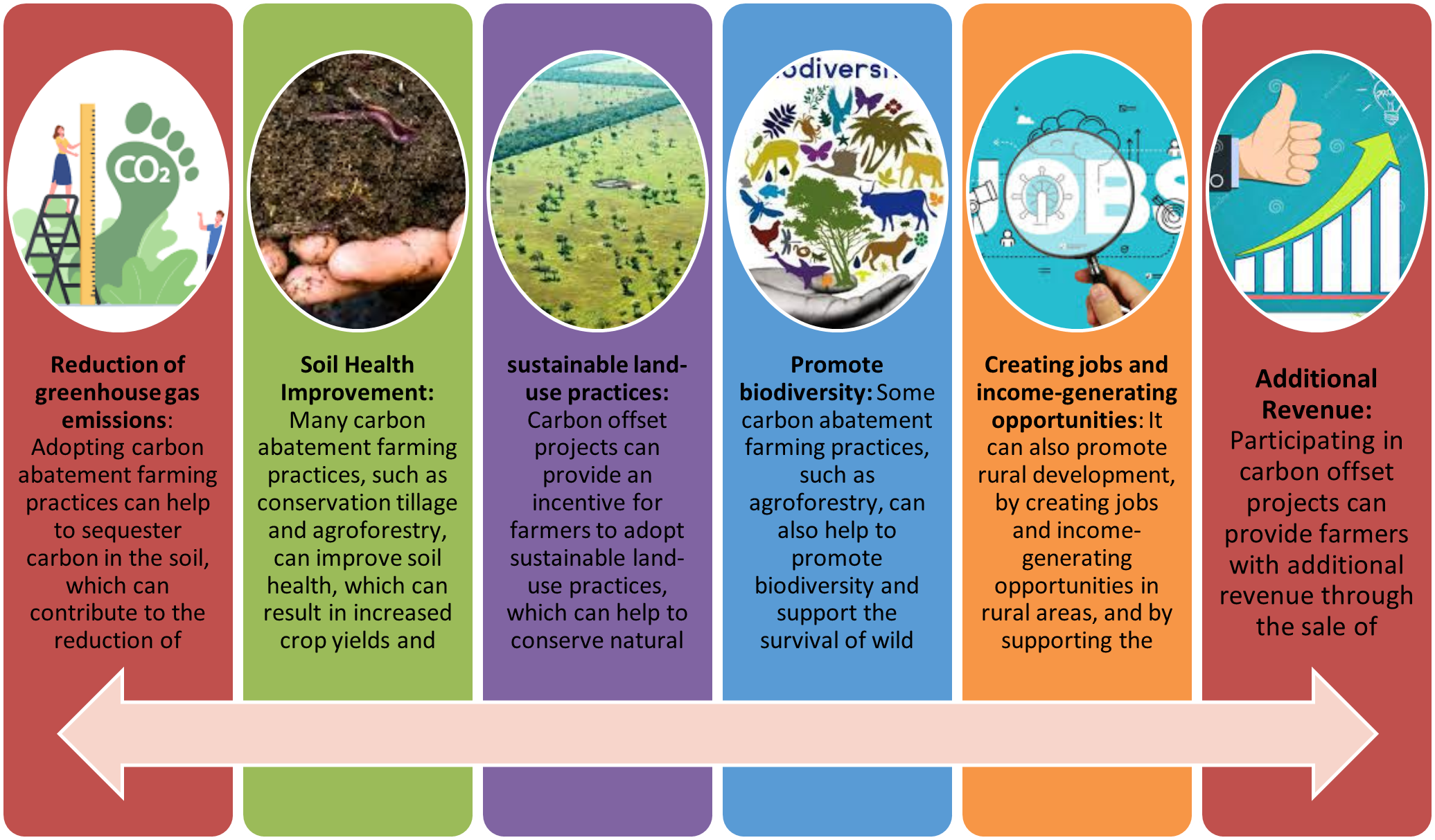
Challenges Associated with carbon trading in Agriculture:
- Trade-off between income and carbon sequestration: The trade-off between the expected additional revenue from adopting a carbon abatement practice and its impact on crop yield is another challenge.
- A farmer will adopt a carbon abatement practice if he expects that revenue from the sale of carbon credits would compensate for the loss in crop yield, if any, due to its adoption.
- Such a trade-off may act as a disincentive to the large-scale adoption of carbon abatement practices.
- Difficulty of Accurately Measuring and Verifying Carbon Sequestration: This is due to the complex nature of the carbon cycle in soils and the difficulty of distinguishing the effects of specific farming practices from other factors such as weather and soil type.
- Higher administrative and transaction costs: The existing agrarian structure in Indian agriculture is dominated by small landholdings usually differing in their cropping pattern and the adoption of carbon abatement farm practices.
- Thus, reaching out to such a huge number of smallholders means higher administrative and transaction costs for buyers of the carbon credits.
- Complex Regulations: The regulatory framework for carbon trading in India is complex and not yet fully developed, making it difficult for farmers and other stakeholders to participate in carbon markets.
- Lack of accurate and consistent data: There is a lack of accurate and consistent data on carbon sequestration by agricultural practices, making it difficult to quantify and trade carbon credits.
- Limited Demand: There is currently limited demand for carbon credits from the agriculture sector, making it difficult for farmers and other stakeholders to find buyers for their credits.
- Lack of Awareness: Many farmers and other stakeholders in India lack awareness of the opportunities and benefits of carbon trading, and how to participate in carbon markets.
Way Forward
- The first step towards creating a market for sequestered carbon is to evolve a transparent process of quantification and verification of additional carbon generated by different farm practices.
Artificial intelligence and remote sensing offer scope for assessing the quantum of sequestered carbon.
- Further, for an individual farmer, the process of selling carbon credits in the voluntary carbon market is tedious. Nonetheless, their participation in carbon trading can be facilitated by collectives such as FPOs and cooperatives that can organize farmers to adopt carbon abatement practices and sell the accrued carbon credits on their behalf.
A few agro-tech companies, for example, Boomitra and Nurture. farm, organize farmers through intermediaries to facilitate their participation in voluntary carbon markets.
- Finally, there is a need to create awareness among farming communities on the benefits of the adoption of improved agricultural practices and participation in carbon markets.
https://www.thehindubusinessline.com/economy/agri-business/how-prepared-is-the-agriculture-sector-in-carbon-trading/article66442693.ece
New Electricity Market for EU - Edukemy Current Affairs
About the News:
- The European Union is proposing a new electricity market for long-term contracts like power purchase agreements (PPAs) to provide power plants with a fixed price for electricity.
- This move is in response to the increase in gas prices and the volatility in energy prices in the EU.
- India on the other hand, plans to dismantle its existing power market design in favor of a mandatory-pool model that eliminates fixed-price contracts.
Important features:
- EU proposes a new electricity market for long-term contracts similar to Power Purchase Agreements (PPAs) that give power plants a fixed price.
- Through the new mechanism, the EU is considering expanding the use of contracts for difference (CfD) and PPAs as part of the broader market reform.
- The proposal aims to provide more stable electricity bills for users amid price volatility caused by factors such as the impact of surging gas prices and flaws in the current marginal pricing market design.
- There are however concerns that the new model may clash with emerging market trends due to increased renewable energy and electric vehicles, which require greater decentralization of markets and voluntary pools for efficient grid management.
The Indian model of the electricity market:
- India is planning to implement a new electricity market model called the Market-Based Economic Dispatch (MBED)
- The new model will centralize scheduling for dispatching the entire annual electricity consumption of around 1,400 billion units.
- The implementation of the first phase of MBED was planned to start in April 2022 but was postponed with no new date announced.
- India's current electricity market operates on a multi-layered model, with the first layer being legacy PPAs and newer agreements, the second layer being medium-term PPAs, and the third layer being short-term PPAs.
- In recent years, the day-ahead spot market with double-sided closed auctions in India has gained traction and the average energy transacted is about 150 million units per day.
- India has also added a real-time market for contingency needs and to absorb the variability of renewable energy.
Major challenges:
- The proposed shift to MBED has triggered concern among sectoral players, including states.
- The current market design with a voluntary short-term market co-existing with long-term PPAs has worked well and there have been no price shocks or windfall gains.
- The spot market share is less than 10% and its volatility can be absorbed by the market.
- India learned from the California fiasco where the spot market was rigged and chose to retain the sanctity of legacy PPAs and introduce a spot market for free trading of electricity.
- Obsession with uniform clearing prices to make electricity look like ordinary goods is considered irrational by a sector expert.
|
Regulation of Electricity market in India |
|
|
|
|
|
|
https://indianexpress.com/article/explained/explained-as-india-prepares-for-centralised-power-market-shift-eu-moves-a-different-way-8410238/
NEGLECTED TROPICAL DISEASES - Edukemy Current Affairs
In News
Global report on neglected tropical diseases 2023, a World Health Organisation (WHO) report, published on World Neglected Tropical Diseases (NTD) Day – January 30, 2023, highlighted the advancement and challenges in delivering NTD care worldwide against a backdrop of COVID-19-related disruptions.
About the News
The WHO report brought to light some important facts about NTDs:
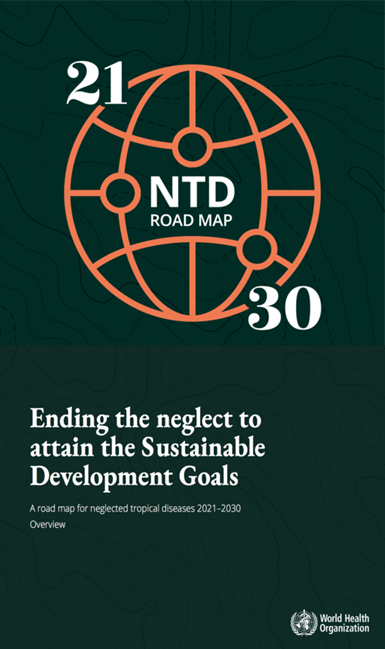
- NTDs continue to disproportionately impact the most impoverished members of the international community, living in areas with inadequate water safety, sanitation, and access to health care.
- 16 countries accounted for 80% of the global NTD burden.
- Globally, nearly 1.65 billion people were estimated to require treatment for at least one NTD.
- COVID-19 had a tremendous effect on community-based initiatives, access to healthcare facilities, and healthcare goods supply chains.
- Due to this, between 2019-2020, 34% fewer persons received treatment for NTDs.
- It underscored greater efforts and investments towards the NTD road map targets by 2030.
- Despite the challenges, there have been some achievements made on this front in 2021-2022.
- More than 1 billion people have been treated for NTDs annually between 2016 and 2019.
- In 2021, 25% fewer people needed treatments against NTDs than in 2010.
- WHO’s efforts in this regard –
- WHO prepared a roadmap – “Ending the neglect to attain the Sustainable Development Goals: a roadmap for neglected tropical diseases 2021-2030”.
- Over 100 scientific recommendations, tools, and other information products were produced as a result of WHO’s NTD efforts in 2021 and 2022.
- The global health body launched an NTD channel with 36 training courses on 19 different topics for healthcare professionals.
- WHO urged multi-sectoral collaboration.
What are NTDs?
NTDs are a diverse group of 20 conditions that are mainly prevalent in tropical areas.
- Not only do NTDs mostly affect impoverished communities and disproportionately affect women and children, these diseases cause devastating health, social and economic consequences to more than 1 billion people.
- Hence, NTDs are double-edged swords. They cause poverty and are born out of poverty.
- The epidemiology of NTDs is complex and often related to environmental conditions. Many of them are vector-borne, have animal reservoirs and are associated with complex life cycles.
- These factors make their public-health control challenging.
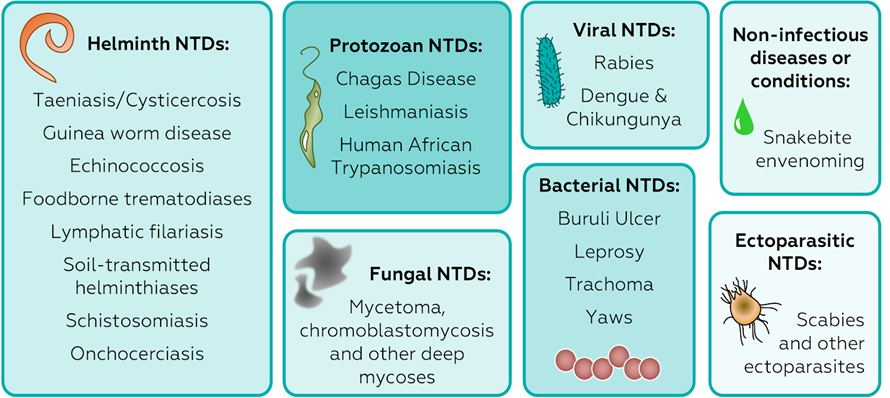
What is the situation of NTDs in India?
- India has the world’s largest absolute burden of at least 10 major NTDs, including hookworm, dengue, lymphatic filariasis, leprosy, visceral leishmaniasis or kala-azar and rabies.
- India has recently committed towards the target of eradicating lymphatic filariasis by the end of 2027.
- NTD control is challenging in India because –
- It is difficult to estimate the actual burden of NTDs in India as there is no single organization or government agency that has been given a mandate.
- Of the 12-13 NTDs existing in India only dengue, rabies, snakebite, and leprosy are notifiable.
- The delays in the elimination of NTDs have been because of poor community participation due to deep-rooted systemic mistrust issues that were not addressed in a timely manner, and low compliance.
- At the implementation level, delays in scheduling mass drug administration rounds in endemic districts resulted in other management problems like delays in drug inventory projections, lack of family registers for health staff, delays in development of district micro-plans etc.
- Government interventions were cut back during COVID-19.
- It is difficult to estimate the actual burden of NTDs in India as there is no single organization or government agency that has been given a mandate.
Source:
https://www.downtoearth.org.in/news/health/neglected-tropical-diseases-day-poorest-countries-continue-to-be-most-affected-says-who-87377
URBAN FARMING IN INDIA - Edukemy Current Affairs
In News
The “Draft Citizen’s Policy for Urban Agriculture in Delhi” by Delhi-based research non-profit People’s Resource Centre, submitted to the Delhi Government in 2022, has thrown light on the lack of policies on land use and farming in the National Capital’s urban areas. Urban farming in India requires holistic policy support.
About the News
60% of Delhi’s demand for meat, 25% of its milk and 15% of its vegetable needs, are fulfilled by city-grown produce. Hence, the draft policy provides a holistic framework to encourage urban farming by -
- Building on existing practices,
- Promoting residential and community farming through rooftop and kitchen gardens,
- Allocating vacant land for agricultural use,
- Creating a market,
- Developing policies for animal rearing and
- Spreading awareness.
Why is there a need for urban farming?
Urban farming occurs when someone living in a city or heavily populated area repurposes their green space to grow food and/or raise smaller animals. There is a need to encourage urban farming because –

- There is a risk of food shortage, as per International Journal on Emerging Technologies, due to rapid urbanisation, population explosion and climate change.
- 50% of women and children in urban areas are anaemic due to lack of adequate nutrition, as per a 2010 report by M S Swaminathan Research Foundation.
- It can provide local food security.
- It can enable jobs and reduce poverty, as per UN Food and Agriculture Organisation.
- It can compensate for less space with Hydroponics, a method of soilless farming.
- Kitchen gardening can act as a cushion to protect urban residents from inflation, vulnerabilities of weather or crises such as COVID-19.
What are some initiatives by various governments in India to promote urban farming?
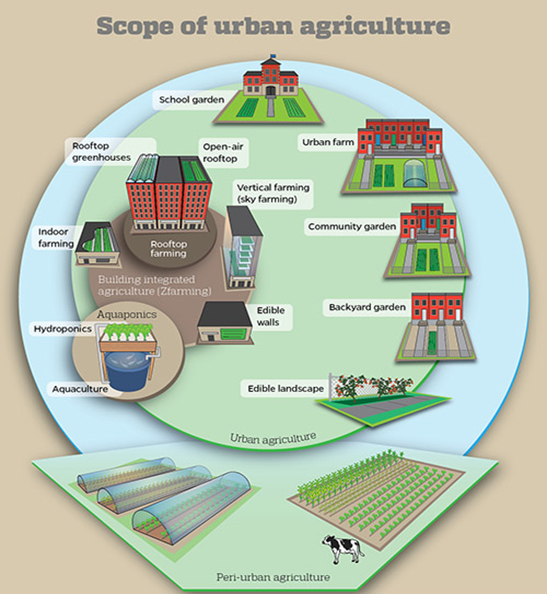
- Pune civic administration, in 2008, launched a city farming project to train and encourage people to take up farming on allocated land.
- Kerala had been food dependent until 2012, when the government launched a vegetable development programme to encourage gardening in houses, schools, government and private institutions.
- It offered subsidies and support for eco-friendly inputs, irrigation, compost and biogas plants.
- Tamil Nadu in 2014, introduced a “do-it-yourself” kit for city dwellers under its Urban Horticulture Development Scheme to grow vegetables on rooftops, houses and apartment buildings.
- Bihar’s Rooftop Gardening Scheme in five smart cities encourages terrace farming through subsidy for input cost.
What are the challenges to urban farming in India?
While the above initiatives are welcome, they are sporadic in nature.
- Lack of interest from people and the government: Pune’s 2008 initiative failed.
- Policies do not acknowledge the practice: The Draft Master Plan of Delhi for 2041 –
- It aims to divide 8000 hectares of land along the Yamuna into two sub-zones and restrict human activity or settlement in areas directly adjacent to the river.
- Several communities on the floodplains practise urban farming. Heavy rains or release of water from barrages flood their lands and damage yields. Their invisibility from government policies, doesn’t provide any assurance.
- Lack of land rights: Farmers engaged in Yamuna floodplain agriculture do not own lands and have to pay rent. They live in constant fear of eviction from the authorities
- Rapid development: Villages like Jaunty, where the green revolution began, have turned to ‘urban village’, making its land non-agricultural.
- Farmers cannot avail benefits under any agricultural schemes such as crop insurance.
- Viability of urban farming is under threat due to water scarcity and pollution.
- A 2016 paper titled Future of Urban Agriculture in India by the Hyderabad-based Institute for Resource Analysis and Policy mentions that in Delhi, Hyderabad, Ahmedabad and Chennai, wastewater is directly or indirectly used for urban farming.
- Excessive use of chemical fertilisers and pesticides: Urban farms can witness lowered produce and soil quality.
Integration of all factors and inclusivity of all stakeholders is needed to encourage urban farming at a large scale.
Source:
https://www.downtoearth.org.in/news/agriculture/cultivated-idea-urban-farming-in-india-requires-holistic-policy-support-here-is-why-85450
ALL INDIA SURVEY ON HIGHER EDUCATION (AISHE) 2020-2021
In news
- Recently, the Ministry of Education released All India Survey on Higher Education (AISHE) 2020-2021.
 About
About
- The All India Survey on Higher Education (AISHE) was initiated in 2011, during which data for the year 2010-11 was collected.
- The Higher Education Institutions of India filled their data using an online data collection platform with the help of Web Data Capture Format (Department of Higher Education and National Informatics Centre.)
Key Highlights
1. Female enrolment:
- It has increased to 49% of total enrolments in 2020-21 compared to 45% the previous year and the Gross Enrolment Ratio for all enrolments (as per the 2011 Census) increased by over 2 points to 27.3.
2. Vulnerable section:
- The data showed that there were 2 lahks more SC students who got enrolled in 2020-21 compared to the previous year.
- The year also saw about 3 lahks more ST students and 6 lakh more OBC students getting enrolled for higher education.
3. Choice of students:
i. Graduate Level
-
- Bachelor of Arts or Humanities was the most popular choice of students.
- In Bachelor of Sciences, women outnumbered men.
ii. Post-graduate level
-
- Most popular stream is Humanities with 56% women enrolment.
- Again, Bachelor of Science followed PG in Humanities.
4. The top 6 States: Uttar Pradesh, Maharashtra, Tamil Nadu, Madhya Pradesh, Karnataka, and Rajasthan.
5. There are 75 female teachers per 100 male teachers.
https://www.thehindu.com/education/student-enrolments-went-up-by-75-in-2020-21-all-india-survey-on-higher-education-data-show/article66447898.ece
Grievance Appellate Committees
In the news:
- The Centre has notified the formation of three grievance appellate committees.
About
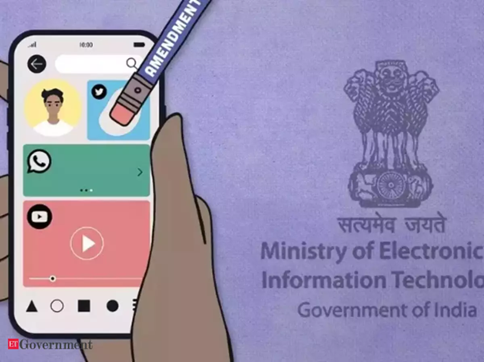
- GAC was established based on the recently amended Information Technology (Intermediary Guidelines and Digital Media Ethics Code) Rules, 2021.
- Purpose
- It will address users’ complaints against social media and other internet-based platforms, including being empowered to oversee and revoke content moderation-related decisions taken by these platforms.
- Composition
- A Chairperson
- Two whole-time members from different government entities, and
- Retired Senior Executives from the industry for a term of three years from the date of assumption of office
- Content Moderation
- It is the process of examining user-generated content. Inappropriate content is eliminated during content moderation. This covers rude, hurtful, harassing, and abusive content.
- Functions of the GAC
- To check the grievances of the users if a user is not satisfied with the content moderation decision of a social company’s grievance office.
- The GACs will adopt an “online dispute resolution mechanism” where the entire appeal process, from its filing to the final decision, will be done online.
- The aggrieved person will be allowed to file an appeal to the GAC within a period of 30 days. The GAC will have to deal with the appeal and resolve it within a month of the receipt of the appeal.
https://indianexpress.com/article/explained/explained-sci-tech/centre-sets-up-panels-for-complaints-against-online-platforms-8409330/
Uthiramerur inscriptions - Edukemy Current Affairs
Why in news? The Prime Minister of India mentioned about the Uthiramerur Inscription in his ‘Mann ki Baat’ episode.
About:
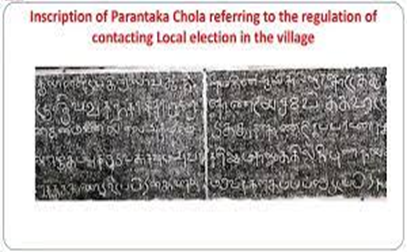
- This inscription dated around 920 A.D in reign of Parantaka Chola-I (907-955 AD).
- It is an ancient Chola village once known as Chaturvedimangalam and is located near Chennai in Tamil Nadu.
- Chola's self-governance was built upon 'general assemblies' or 'sabhas' or 'maha sabha' of villages.
- Every village was categorised as kudumbu (ward in modern day parlance) where representatives of general assembly were elected.
- Qualification for contesting: Must own land, own a house built on legally owned site, have knowledge of 'Mantrabrahmana’, and above 35 years of age and below 70 years.
- Disqualification: If elected members proven guilty of misconduct, they were disqualified from contesting future elections.
- Committees: Village general assembly resolved to choose member for Annual Committee, Garden Committee, and Water bodies Committee.
https://indianexpress.com/article/political-pulse/democracy-in-indias-veins-integral-part-of-our-existence-for-ages-pm-modi-mann-ki-baat-8410694/
Kakatiya tradition - Edukemy Current Affairs
Why in news? The Prime Minister of India mentioned about the Kakatiya tradition in his ‘Mann ki Baat’ episode.
About:
- It ruled the region comprising present-day Telangana and Andhra Pradesh from 12th to 14th centuries, with Warangal as Capital.
- They constructed irrigation tanks that played a critical role in peasantry life. These tanks are in use currently.
- There were elected committees in the villages to look after installation and maintenance of tanks, canals, and reservoirs.
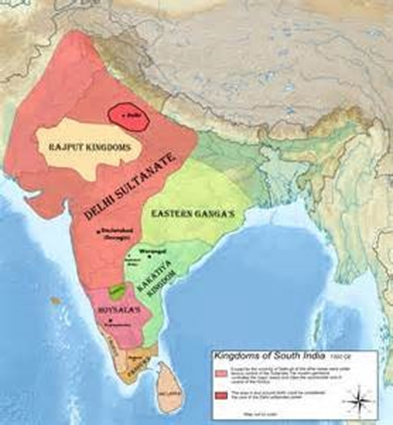
https://indianexpress.com/article/political-pulse/democracy-in-indias-veins-integral-part-of-our-existence-for-ages-pm-modi-mann-ki-baat-8410694/
Section 126 of RPA, 1951 - Edukemy Current Affairs
Why in news? Recently, the schedule for holding General Election to the Legislative Assemblies of Meghalaya, Nagaland & Tripura, 2023 has been announced.
 About:
About:
- Section 126 of the RP Act prohibits displaying any election matter by means, inter alia, of television or similar apparatus, during the period of 48 hours before the hour fixed for conclusion of poll in a constituency.
- The provision prohibits conduct of Exit poll and dissemination of their results during the period mentioned therein, in the hour fixed for commencement of polls in the first phase and half hour after the time fixed for close of poll for the last phase in all the States.
- Violation of the provisions of Section 126 is punishable with imprisonment upto a period of two years, or with fine or both.
https://www.pib.gov.in/PressReleasePage.aspx?PRID=1894236
Anubhava Mantapa of Lord Basaveshwara
Why in news? The Prime Minister of India mentioned about the Anubhava Mantapa of Lord Basaveshwara in his ‘Mann ki Baat’ episode.
About:
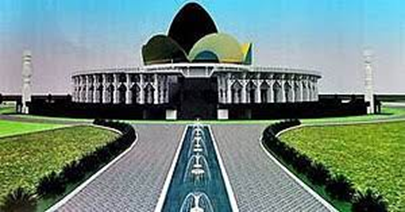
- It was established by Lord Basaveshwara to facilitate gathering for philosophy and experience.
- Anubhava Mantapa was one of the earliest Parliament in history of mankind.
- Prabhudeva, a great Yogi of extraordinary achievement, was the President and Lord Basava acted as the Prime Minister.
- Problems tackled were of various natures covering social, religious, spiritual, yogic psychological, economic, and literary spheres.
- Only difference between the present-day parliament and Anubhava Mantapa is that members were not elected by people but were picked up or nominated by higher authorities of Mantapa.
Lord Basaveshwara (1105-1167):
- He was a 12th century poet and born in Karnataka.
- Known for Socio-Religious Reforms, Anubhava Mantapa, Vachana Literature and Lingayat Movement in south India.
- Basava Purana, written by Palkuriki Somanatha in 13th-century, holds full account to Basavanna’s life and ideas.
- Who rejected gender and caste discrimination, superstitions and rituals. A strong promoter of ahimsa (non-violence).
https://indianexpress.com/article/political-pulse/democracy-in-indias-veins-integral-part-of-our-existence-for-ages-pm-modi-mann-ki-baat-8410694/
HSTDV - Edukemy Current Affairs
Why in news? Recently, DRDO tested the hypersonic technology demonstrator vehicle (HSTDV) powered by a scramjet engine.

About:
- HSTDV is an unmanned scramjet demonstration aircraft that can travel at hypersonic speed.
- It uses hypersonic air-breathing scramjet technology.
- HSTDV will serve as a critical building block for hypersonic weapons (Speed > 5 Mach or 5 times speed of sound).
- Like ramjet engine, scramjet uses atmospheric air for oxidiser and compresses incoming air before it enters combustion chamber.
https://m.timesofindia.com/india/india-conducts-another-test-in-a-bid-to-develop-hypersonic-weapons/articleshow/97389386.cms
Etikoppaka wooden toy craft - Edukemy Current Affairs
Why in news? The Union government on January 26, 2023, conferred Padma Shri on C.V. Raju in the art category.
About:
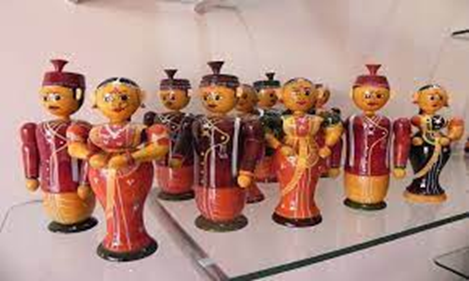
- These are traditional toys made by artisans of Etikoppaka village located on the banks of Varaha River in Visakhapatnam district of Andhra Pradesh.
- These toys are made out of wood and are coloured with natural dyes derived from seeds, lacquer, bark, roots and leaves.
- The artisans mainly use the wood from trees known as ‘ankudu‘(Wrightia Tinctoria) that is soft in nature.
- These toys have no sharp edges. They are rounded on all sides.
- Etikoppaka toys received Geographical Indication (GI) tag in 2017.
https://www.thehindu.com/news/national/andhra-pradesh/padma-award-is-an-honour-for-the-etikoppaka-toy-craft-says-cv-raju/article66436816.ece
Share the article
Get Latest Updates on Offers, Event dates, and free Mentorship sessions.

Get in touch with our Expert Academic Counsellors 👋
FAQs
UPSC Daily Current Affairs focuses on learning current events on a daily basis. An aspirant needs to study regular and updated information about current events, news, and relevant topics that are important for UPSC aspirants. It covers national and international affairs, government policies, socio-economic issues, science and technology advancements, and more.
UPSC Daily Current Affairs provides aspirants with a concise and comprehensive overview of the latest happenings and developments across various fields. It helps aspirants stay updated with current affairs and provides them with valuable insights and analysis, which are essential for answering questions in the UPSC examinations. It enhances their knowledge, analytical skills, and ability to connect current affairs with the UPSC syllabus.
UPSC Daily Current Affairs covers a wide range of topics, including politics, economics, science and technology, environment, social issues, governance, international relations, and more. It offers news summaries, in-depth analyses, editorials, opinion pieces, and relevant study materials. It also provides practice questions and quizzes to help aspirants test their understanding of current affairs.
Edukemy's UPSC Daily Current Affairs can be accessed through:
- UPSC Daily Current Affairs can be accessed through Current Affairs tab at the top of the Main Page of Edukemy.
- Edukemy Mobile app: The Daily Current Affairs can also be access through Edukemy Mobile App.
- Social media: Follow Edukemy’s official social media accounts or pages that provide UPSC Daily Current Affairs updates, including Facebook, Twitter, or Telegram channels.


